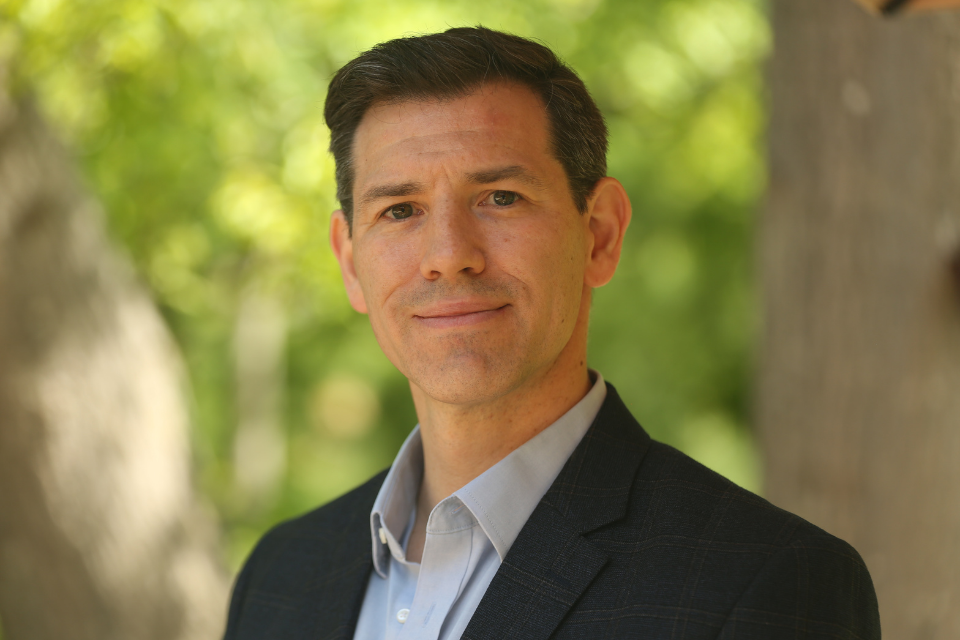Brandeis Alumni, Family and Friends
Q&A: Dr. Jonathan Epstein ’96

Photo Credit: EcoHealth Alliance
Dr. Jonathan Epstein ’96 saw COVID-19 coming. He is among a group of scientists recently spotlighted in the progressive magazine Mother Jones who are trying to stop the next pandemic before it starts.
Epstein, a veterinarian and disease ecologist, is vice president for science and outreach at EcoHealth Alliance, an international conservation and public health-science organization based in New York. His research centers on deadly zoonotic viruses, transmitted from animals to humans, that have emerged in Asia and Africa. Brandeis Magazine has described his studies of bats in particular which are seen as reservoirs of novel and emerging diseases. The goal of his research is to help prevent outbreaks of these lethal viruses by better understanding the factors that cause them.
He recently spoke with the Brandeis Alumni Association by telephone from eastern Long Island, where he is weathering the pandemic. He reflected on the causes of the current health crisis, the likelihood of another like it occurring again, and how Brandeis shaped his path as a scientist.
Q&A With Jonathan Epstein ’96
In Mother Jones, you’re quoted raising two pivotal questions: “How did this happen? And could it happen again?” So let’s take up those questions. First, how did this happen?
Where do you want to begin? The 30,000-foot view of how we got here is that in the past 10 to 15 years, we improved understanding of how epidemics like this happen, but failed to do enough, globally, to stop them from happening. The majority are caused by human activities, like land-use change that includes deforestation, or conversion of land to agriculture or urban environments. It also includes wildlife trade, whether it’s directly hunting animals in the forest, or bringing them out of the forest and into urban wildlife markets. That’s certainly how the original SARS coronavirus emerged in southern China. The current pandemic has been associated with a live animal market.
Could it happen again?
The answer is, it will happen again, unless we make some significant changes globally in our commitment to prevent it. We knew that this was a risk. For the last 15 years, we have been studying coronaviruses in their natural reservoir, which in this case are horseshoe bats: small insectivorous bats commonly found not only in southern China but across Asia, which have been found to carry coronaviruses closely related to SARS. We originally identified them as the probable reservoir for SARS when we found a closely-related coronavirus in them back in 2004. We see a number of viruses actively circulating in populations of wild bats that appear to have the ability to cause infection in people.
For years we have been talking about the very clear imminent risk of another coronavirus emerging. These viruses emerge because of opportunity, created when people make contact with wildlife. Whether hunting and catching these bats, or entering caves where these bats live and being exposed to excretions where coronaviruses are spread, we create opportunities for viruses to get from bats into people.
There is conjecture the coronavirus might have escaped somehow from a lab in Wuhan, China. In your view, is there anything to this?
There’s no evidence whatsoever to support any of these theories that the virus was somehow created in or released from a lab. In fact, quite the opposite: There’s significant scientific evidence from evolutionary biologists that this virus emerged through natural processes, from bats into people, through other animals most likely.
What are some steps that could be taken to prevent the sort of animal-human contact whereby these viruses spread? Banning wildlife markets or trafficking of certain animals?
There are a lot of good reasons to legislatively stop the wildlife trade — first and foremost, for conservation reasons, to protect animals devastated by being pulled out of the wild to be marketed for traditional medicines or consumption. It is important to make a distinction: In this context in southern China, we’re talking about a wildlife trade driven by a desire to consume wildlife not out of necessity but as a luxury. Whereas there are a lot of cultures, including many parts of China, where people eat wildlife as a necessity: It’s their sole source of animal protein.
But legislation alone is not enough. Making a risky practice illegal simply drives it underground, making it harder to monitor. You need to work with local social scientists who understand the motivations for high-risk behaviors like hunting and eating bats or other wildlife that we know carry viruses that could emerge in people. Only when you understand the motivations can you start to develop interventions to change those behaviors. Anyone in public health knows, you can’t simply stop people from doing something risky by telling them not to.
You’re doing some remarkable — and clearly very important — work in hunting viruses. One might observe it takes a rather adventurous person to crawl through bat caves, let alone wrestle camels for testing. What sparked your calling in this area?
Like anything, dumb luck. Certainly, the field component of this isn’t for everybody. I got into veterinary medicine because I was interested in wildlife. But I didn’t know anything about epidemiology or One Health before vet school. At Tufts, I was enrolled in a joint DVM/MPH program that put me, along with medical students, into a masters in public health program while doing our medical degrees. I was looking for what connected human and animal health, and infectious disease was a natural fit. So many new diseases seemed to be emerging from wildlife, the outbreaks driven by destruction of ecosystems and human influence on animal populations. Human health could be used to help leverage conservation. That appealed to me.
Did your Brandeis experience shape the professional path you’ve taken?
I received a strong foundation in basic sciences at Brandeis. At the time I was going through Brandeis, I might have been the only pre-veterinary candidate. That prepared me to forge my own path, which continued as I entered into public health as a veterinarian thinking about zoonotic disease and wildlife.
What’s the takeaway for a current Brandeis student?
Whatever your field, you have something to contribute to human health. It might be through the humanities, or research science, or through medicine or epidemiology or public health. All of these fields contribute greatly, and certainly veterinary medicine, too. The undergraduate years are a great time to be thinking about interest in health that might not be through traditional courses. It might not be through medical school, specifically. When you have the ability to study a wide variety of things, as you do at Brandeis as an undergraduate, it’s a great time to explore connections among different disciplines.
Published On: June 11, 2020






